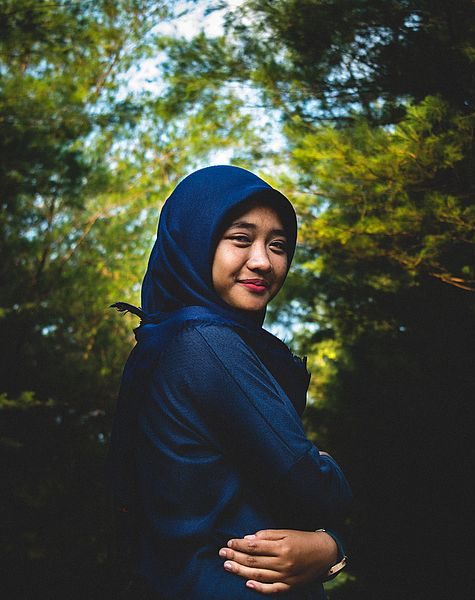What it means to wear ‘hijab’

December 15, 2020
Most people tend to misunderstand that “hijab” means an article of clothing. However in Arabic, it actually means “a barrier” which indicates the mutual respect women and men should foster for each other, so men also have a hijab to lower their gaze towards women and treat them as equals. Many women choose to wear a hijab on their own because it cultivates a sense of women empowerment, represents Muslim pride, and fosters a collective sense of identity. The Quran (holy book for Muslims), has an entire chapter dedicated towards women’s rights and explicitly states that men and women are equal in the eyes of God. It instructs Muslims to educate daughters and sons, insists that women have the right to divorce, and when they get married the money belongs to the woman and not the husband. Hence, according to the Quran and Islam women are not supposed to be entitled to a man or oppressed at all. In fact, it was Prophet Muhammad who started women’s rights. His wife, Lady Khadija was the richest and most successful business woman at the time and broke cultural stereotypes by initiating her own marriage. Furthermore, when the marriage proposal came for the Prophet’s daughter, Lady Fatima, the Prophet asked the man to not ask him but ask his daughter directly for her hand in marriage because it was her choice not his. Muslim women around the world, particularly in America, are affected with negative stigma. Oftentimes, they are labeled as terrorists for wearing a hijab. However, in reality, hijab symbolizes that women should be valued for their character and personality, not only for their outer appearance.
In Flower Mound High School, Sarah Patel and Sakina Ali, two Muslim girls who wear hijab explain what hijab means to them. Sarah Patel, junior, says: “Wearing hijab to me means showing modesty. Hijab is an expression of your faith and not worrying much about what others think. It is a personal opinion and choice, don’t be swayed because of social influence.”
Sakina Ali in her senior year says: “I believe that wearing hijab allows me to make a stronger first impression because it shows resolution and modesty. Wearing hijab is not just about covering your hair, it’s about your actions as well. Your actions and intentions being modest is a part of hijab”.
Furthermore, they explain what it is like to wear a hijab. Patel says: “I have faced both negative and positive comments. Probably more negative comments and racist ones but there are many people who say they admire me for wearing it.” Ali says: “Allhamdulillah (thank God) I have not received any negative comments. Wearing hijab shows strength, especially in a non-Muslim society because it makes you the odd one out. But all the troubles help you grow and can shape you into a confident woman. But overall, hijab is a choice, and if you commit to wearing hijab, it is a way of life. To other Muslim girls I would say to ignore all the negativity around you, focus on the good: the character development, the blessings, and the beautiful hijabs you choose to wear!” As Muslim girls in the local Flower Mound community show the reality and the beauty of wearing hijab, they represent Islam in a powerful way by showing their identities and loving themselves.
High school is a time where kids are trying to figure out who they are and find ways to express themselves. A time where kids expand their character development and truly show themselves to the world. The hijab helps with that representation of identity to Muslim girls like Sarah and Sakina.

